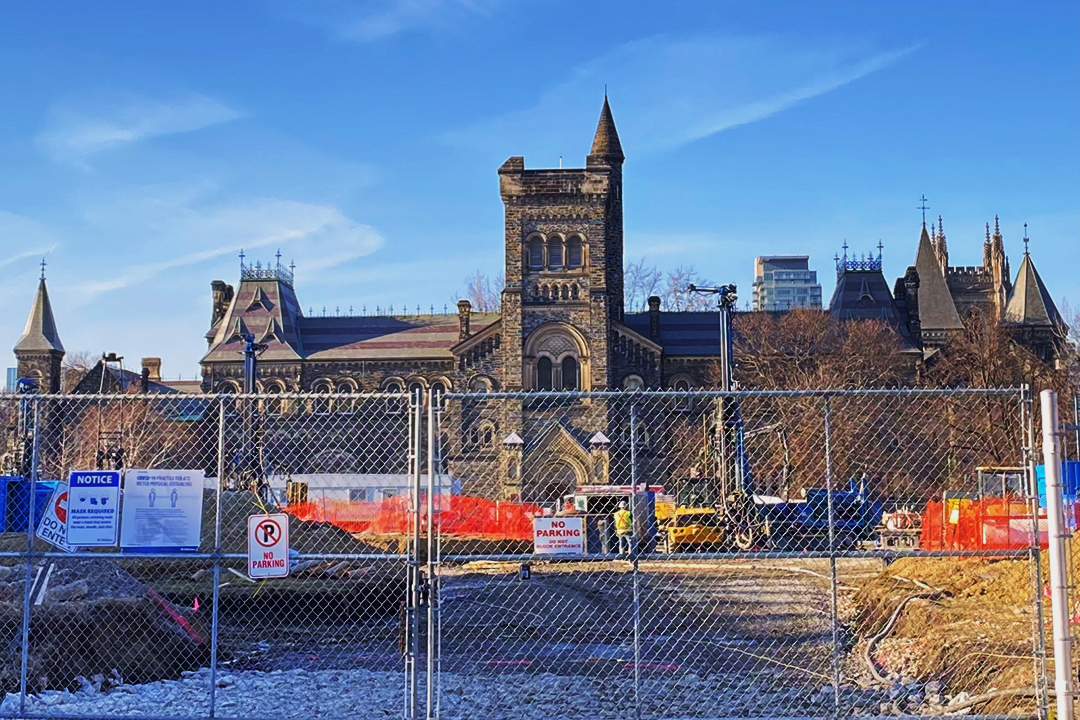Student leaders should be applauded for their recent passionate advocacy about the climate crisis and their calls for tangible change to ensure a climate-secure future for us all. We as a university share that passion and commitment to change, but since much sustainability at U of T, as elsewhere, happens under the floor, behind the wall, or in meetings only visible to those participating, I wanted to share more about our leadership and our work on sustainability in this article.
Like many public institutions, the university has considerable pensions, endowments, and capital assets. The call for immediate divestment from fossil fuels is heard from within our community and sometimes from beyond. This has also been an area of much thought, research, and analysis for the university administration, which provides direction to University of Toronto Asset Management (UTAM) in how it manages the university’s investments.
The need for substantive action that has real impact is compelling in light of the current climate crisis. This has led the university, working closely with UTAM, to search for an approach that focuses on the greenhouse gas emitting behaviour of actors from all sectors of the economy. By using a model that looks at the environmental, social, and governance (ESG) sources of risk in the university’s portfolios, UTAM estimates that, ultimately, we can achieve a carbon footprint reduction that is more than three times greater than the effect of immediate divestment from fossil fuel companies alone.
The university’s target, for which U of T is on course to reach, is a 40 per cent reduction in the carbon intensity of its long-term investment portfolios by 2030. The university believes that reducing carbon emissions across all sectors of the economy is the most important goal and that it can best be achieved through this comprehensive approach.
Our ambitions are also strong when it comes to setting targets for the reduction of direct greenhouse gas emissions from the university’s own operations. The 2019 Low Carbon Action Plan outlines a reduction of 37 per cent by 2030 from a 1990 level baseline. It is a detailed university plan to produce clean energy and carbon capture, to distribute our power efficiently, and to consume less.
The forthcoming energy and carbon master plan will identify additional savings that should enable the university to adopt an even more ambitious goal and strategy for reducing its own greenhouse gas emissions.
One particularly exciting project is Canada’s largest urban geothermal exchange, which will be underground on the front campus and will produce heating for buildings around King’s College Circle. We are also retrofitting our existing buildings, implementing more rigorous standards for new developments, recovering waste heat, harnessing solar power, and developing innovative carbon capture projects, which are being led by our world-class researchers.
As an educator, a critical part of the university’s role is to offer teaching and learning opportunities that are related to sustainability. These include sustainability pathways that will be made available to all undergraduate students to allow them to become ‘sustainability citizens’ by undertaking a number of approved co-curricular activities, ‘sustainability scholars’ by doing a minor or certificate in sustainability, and ‘sustainability leaders’ by becoming both a citizen and a scholar, as well as completing a capstone project, which could incorporate experiential learning. Our ambition is to develop sustainability skills and knowledge that will be useful to all students after graduation.
We view the campus as a living lab of sustainability. We are currently looking to involve students very directly in sustainability projects on our three campuses. Our goal is to have 1,000 students a year carrying out sustainability-focused living lab projects at the university.
I believe that it is also vital that U of T takes a leadership role internationally. We are achieving this through policy leadership, notably through our membership in the University Climate Change Coalition of 22 leading research universities in North America, the U7+ Alliance of 45 universities worldwide, and the Global Research Alliance for Sustainable Finance and Investment of 27 international universities. We are one of the signatories of the “Investing to Address Climate Change” charter, which amplifies our vision for an ESG approach to investment practices. These partnerships, and others like them, are instrumental in bringing tangible change well beyond our three campuses.
As we develop and extend these projects, U of T is striving to develop and implement a holistic commitment to sustainability that cuts across research, teaching, learning, operations, and community engagement. It is very important that students continue to scrutinize our activities, offer commentary and critique, and get involved in the living labs. We certainly don’t have all the answers, but we are determined to maximize our shared impact in the search for a sustainable future. That will require the best efforts from all of us, faculty, staff, and students, both on and off campus.
John Robinson is a professor at the Munk School of Global Affairs & Public Policy and at the School of the Environment. He is also the presidential advisor on the environment, climate change, and sustainability for the University of Toronto.
Editor’s note (March 22): This article has been updated to reflect excerpts that were previously omitted due to an initial lack of sourcing during the editing process.


